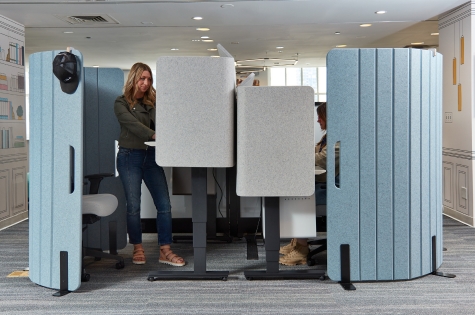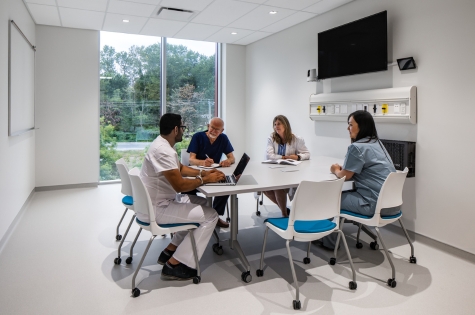Place Matters: The Role of Workplace Design in Talent Management

By Amelia Compton Wolff | Editor, INSIGHT ON BUSINESS
Traditional office spaces are no longer a necessity for many businesses — the acceleration of remote work during the COVID-19 pandemic proved that — so the existence of these spaces must be driven by purpose and serve true needs, for both businesses and employees.
A 2021 Microsoft survey revealed that 41% of the global workforce would consider leaving their current employer in the following year, and more than half said work environment would impact their decision.

Jonathan Webb, director — workplace strategy for Green Bay’s KI, says the post-pandemic office must support a new way of working — one that prioritizes adaptability, flexibility and customization.
“Before 2020, 97% of companies didn’t have anything that resembled a hybrid or work-from-home policy at all,” Webb says. “It just wasn’t part of the culture of a majority of professional organizations. We pivoted toward a work-from-home model very quickly, and it really impacted how real estate was perceived.”
As hybrid work has increased post-pandemic, Webb says many organizations still struggle with engaging in-office and remote teams in meaningful, efficient collaboration.
“That’s impacted space pretty dramatically for organizations, from the way that we set up rooms, the size of rooms, the number of rooms and the furnishings we put in those rooms to make sure everybody feels connected,” he says.
Office acoustics are another issue that has come to the forefront, says Webb, who points to KI’s work with Facebook parent company Meta as a prime example of a successful custom solution to this persistent problem.
Meta’s open-concept office wasn’t conducive to the increased need for video conferencing, so KI developed freestanding screens to increase privacy and reduce noise. Webb says they were affectionately dubbed “burrito screens” because “you can literally wrap yourself up like you’re the meat of a burrito.”
“Creating that physical barrier was really impactful for their team,” Webb says. “They did some testing after they put that solution in place and actually reduced the decibel level within the space by 22 to 24 decibels.”
The usage and implementation of technology are becoming increasingly important in talent management, which can be seen prominently in the health care industry. Webb says the U.S. digital health market or telehealth industry will grow 17% by 2030.
“These health care companies are turning into small technology companies themselves,” he says. “They’re trying to not just attract world-class doctors and medical professionals, but they’re trying to get talented tech workers who could help make their businesses more effective and efficient as well.”
Steve Vlotho, construction project manager at Bellin Health, says the Green Bay-headquartered health care organization received feedback from providers at its Bellin Health Surgery & Specialty Center in Ashwaubenon that there was a need for more flexibility in displaying images during patient visits — whether that patient was sitting in a wheelchair or standing.
Bellin worked with KI to design a half-moon-shaped table with a mounted monitor that can be adjusted to whatever height is most comfortable for the patient. The table allows providers to more effectively and comfortably display images and document visits.

“The table serves multiple purposes, which is nice on the technology side — especially in those ortho visits because they are more technology-driven than any of our other type of visits with all the imaging like X-rays, CT scans and MRIs,” Vlotho says.
Bellin is also partnering with KI on its “Room of the Future” project, which works to create more tech-friendly, flexible spaces that can adapt to a variety of needs. This includes equipping family practice clinic exam rooms with wall monitors, cameras and microphones to accommodate increasing telehealth visits.
“Health care is ever evolving,” Vlotho says. “Especially nowadays, it’s changing so rapidly that customization allows us to come up with products and solutions that are multifaceted and make it a meaningful visit for everybody that comes through the door.”
This emphasis on customization not only addresses the diverse needs of patients in health care settings, but it also sets a precedent for other industries. Webb says despite increasing remote and hybrid work, the physical atmosphere of a workplace affects employee wellness, productivity and satisfaction.
“When it comes to talent attraction and retention, I think the workplace can do a lot — it can do as much as the benefits that your company is offering,” he says. “Place matters, and I think building an environment that’s welcoming for employees is still very important to people.”